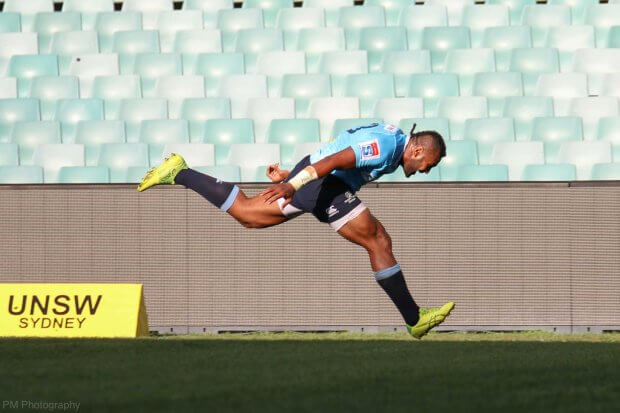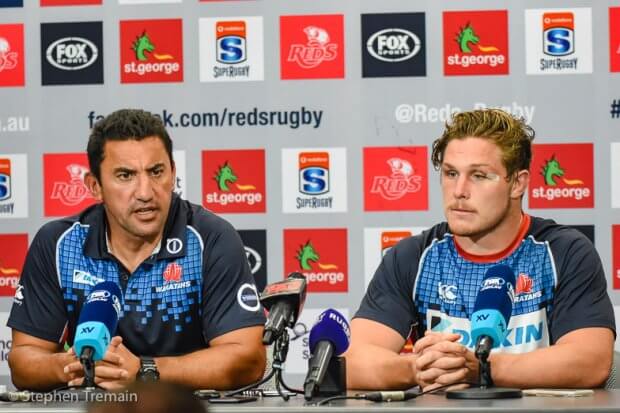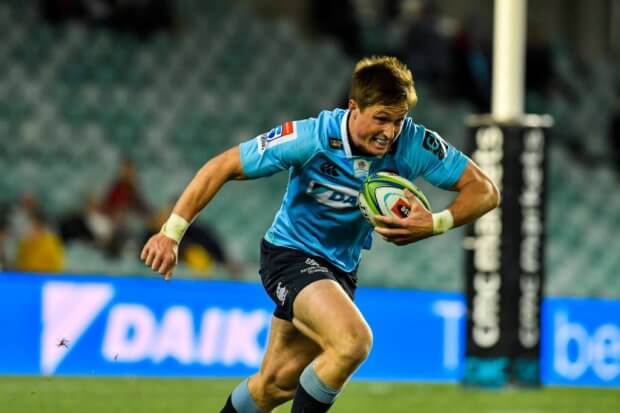Scheduled Website Maintenance
We’re currently in the process of moving to a new and improved server environment. During this transition, the website may experience brief interruptions or temporary outages.
We appreciate your patience while we complete this upgrade. Service will return to normal shortly, with improved performance and reliability.
Thank you for your understanding.
In the season preview I wrote:
- They will be third in the conference and miss the finals.
- To exceed that would be a surprise.
- But hope, that most dangerous of emotions, still remains a spark in every Waratah fan’s heart.
The first comment I would make with 20/20 hindsight is that I totally got the Brumbies season wrong. I genuinely felt they had the cattle to do very well this year and with Pocock, Valetini and Naisirani, potentially the best backrow in the competition. Alas they didn’t really get going till round 16 and saved their best game for last. In doing so, they took the Waratah’s chances of a home semi with them.
The second comment?….. I am a notoriously awful tipster.
Game strategy:
The Waratahs played the only strategy they seemed to be able to, given their squad. This was to play with lightning fast ball movement, shifting the point of attack quickly so that their lack of power players, except at 14, was covered over. I still cannot decide whether they chose the strategy last year and selected the squad accordingly or whether the strategy was forced on them by the squad they recruited.
Squad selection:
The Waratahs had basically recruited their full 2018 squad before the announcement of the reduction to four teams. The big signings were Simmons, Staniforth, Rona and Beale. Along with this there was the usual cutting and polishing that goes on every season. But after the four-team announcement, the Waratahs made a choice that they would not participate in a bidding war for the services of the Force players (except Rona and Newsome). There was a long secret war over whether McCalman was fit enough to come on board. This ultimately culminated in no announcement at all, so that the fans were kept in the dark and left to draw their own conclusions).
There were hints that this was driven by cost-cutting from the CEO’s desk, but we just don’t know whether cost drove the policy or whether that’s the type of team Gibson wanted. The Rebels had no such issues as they hoovered up most of the available talent, based on the fact that the ARU was stumping up the cash anyway. I doubt whether anyone outside the inner sanctum will ever find out whether squad recruitment was cost-driven or game philosophy driven, though I’d love to know.
Anyhow, all the Force’s big hitters (Coleman, Naisirani, Philip, Arnold etc.) went elsewhere, leaving the Waratahs with a pack of powder-puff workhorses.
And despite the fact that some of those powder-puffs played way beyond their known potential, in the key games in the tournament (Lions/Crusaders/Chiefs/Brumbies/Semi-final) the pack ultimately succumbed to the extra power that their opponents brought. That result was entirely predictable in February, before Round One (see Preview). That they were so close to the top was a source of some surprise; but a good big forward always beats a good little forward. In the end, the Lions/Crusaders/Brumbies’ forwards got their team home.
The Season:
The season naturally broke up into four blocks:
- The South Africans: After Round Four the Waratahs had six points and had just been humiliated by the Jaguares. They were exactly where they were expected to be; although no one predicted the Jaguares’ performance.
- Australia One: By the end of Round Nine, the Waratahs had climbed to five wins and one draw as the other teams in our conference fell by the wayside. The conference was a two horse race between the Rebels and Waratahs with the pre-tournament conference favourite, the Brumbies, struggling to stay above the Sunwolves.
- The Top Teams: Rounds 10-15 had the Lions and four NZ teams. A comprehensive loss to the Lions, a home loss to the Blues, an agonising loss to the Crusaders and a close loss to the Chiefs were slightly balanced by a comprehensive win over the Clan.
- Australia Two: Three good wins in the conference and one terrible loss to the Brumbies that consigned us to third in a competition where you need to be first or second to have a real chance at lifting the trophy.
Adversity:
Every team experiences it, those things that you don’t anticipate but which just come up and smack you behind the ear. Injuries were relatively light this year, though Hooper’s injury hurt badly. Arguably the biggest loss was Dempsey, and his return to the team just got regularly postponed. His loss was big because, although he’s not a huge power player, he has enough mongrel to worry an All Black pack.
The draw worked really well but this year the refereeing was the big adversity and most of that was concentrated in one crucial game against the Crusaders. From being up 29-0, the referee and TMO allowed a red card offence to go unpunished and the offender scored their first try. Eventually the Waratahs lost by two and that one decision cost the Waratahs second place and a home semi-final.
I’m still raging about the injustice of it, but if the truth be known it was the Brumbies game that cost the season and the impact of refereeing over the other Waratah games was fairly benign.

Defence:
After last year, any improvement would have been welcomed. Gibson took over the defence coach role and stopped most of the dance routine backline shuffles and improved the drift defence. But overall, the Waratahs were still in the bottom half of the missed tackle stats and still leaked tries they should not have. There’s a lot to work on in the off-season.
Team Selections:
The coaching staff really bought into the speed beats power mantra and Fitzpatrick started most games with Latu only making the bench for the last few rounds and then starting in the semi-final. Given that Cheika rated Latu way above Fitzpatrick, his exclusion for most of the season just did not make sense. Latu’s work at the breakdown was sorely missed, as was his scrummaging. Perhaps Brad Thorne is not the only coach with selection issues clouded by external factors.
There were no power-runner forwards in the squad, so I guess you can’t complain that Gibson never picked any in games. But every pack needs balance and the Waratah’s pack didn’t have it.
There were other things I didn’t understand either. Nick Palmer was tried early as the bench lock, but after what appeared to me to be some good performances he was dropped, and then injured in Shute. He was a hard-case lock, and the Waratahs didn’t have one and didn’t think they needed one.
Not once did they think to trial Big T at 13 for parts of games, despite his good performance for the Barbarians there last year. Him running an overs or unders line off Kurtley with Folau and Rona on the outside could have been a variation to strike terror into a Kiwi coach’s heart. It took too long for Kellaway to be dropped and for Newsome to displace Clark too; Newsome just had the ability to do something special.
Rock Stars
Seven of the team stood out this year, each in their own way:
- Player of the Year: Kurtley Beale. He seemed to be at the heart of every good thing about the Waratah attack. He is the team’s premier playmaker, despite playing at 12. In the Waratah system he regularly plays at first receiver, with Foley playing one or two further out. In the second Rebels game he turned what looked like a rout into an unlikely win. He is the single most important player in the team. We can lose Naiyaravoro or Folau and it will hurt, but losing Beale during the season would be likely to cause terminal damage.
- Taqele Naiyaravoro: Fifteen tries in a season, a Waratah record, and made on average more than 10 metres every time he touched the ball. Almost impossible to stop once he has hit speed because of his ability to twist and fend at pace. He’s a victim of Gibson’s refusal to prioritise power over workrate. In February it was apparent that his improved fitness was going to make him an absolute weapon and at that time he should have been locked away on a long term contract. He wasn’t and now he’s off to Northampton. He’s Nadolo mark 2 except that the original Nadolo didn’t look half as good when he left.
- Wells: He made me eat my words. I would have discarded him last year for lack of size and power but in some of his games this year he was close to best on ground. Always did his job, not spectacular, just did whatever it took and gave everything he had.
- Miller: Although he played several times at 6 with distinction, he really came into his own when the indestructable Hooper finally got injured. He made the try-save of the year when he chased a back for 50 metres and caught him just before the line. At anywhere but the Brumbies he would be the first choice openside and needs to go elsewhere for a start with Hooper ahead of him; but now that we know Hooper can be injured he is the perfect back-up.
- Forward of the year is Tom Robertson. People dismissed him early on because they weren’t watching his progress. In the first half of the season he was regularly being slagged off in rugby forums because people were commenting on reputation. He ran well with the ball, especially as props are not supposed to sidestep their way into gaps, but he does. He made over 85% of his tackles and was usually first-up rather than assist. His scrummaging is totally under-rated, though he is not yet at the top level. He’s just Mr. Reliable, week-in/week-out.
- Chris Malone is leaving this year and he will be badly missed. He was attack and backs coach and while having Beale, Folau and Naiyaravoro makes it hard to stuff up, I thought some of the first phase attack this year was breathtaking.
- When Simon Cron speaks in interview he makes complex issues simple. Clearly that same thing characterises his player coaching. Man on man you would probably rate the Waratahs in the bottom quarter of Super packs but they never played like that and beat a lot of better credentialled packs with smart play. If he’s head coach in 2020 the Waratahs will give the competition a huge shake.

A Rating?
Ratings are hard when the season was characterised by inconsistency. My take on it is that the Waratahs didn’t have a bone-deep understanding of how well they would have to play for the whole 80 minutes to get the result they wanted. So they would play with brilliant skill in small spurts, only to butcher a try with the other team on the ropes. Occasionally they would play brilliantly in long patches like the first 30 minutes against the Crusaders; but then, they would lapse back into errors or take their foot off their opponent’s throat.
First in the conference, third on the log, made the semi’s. After last year its a huge improvement but for mine it could have been way better.
Hawko’s score: B


